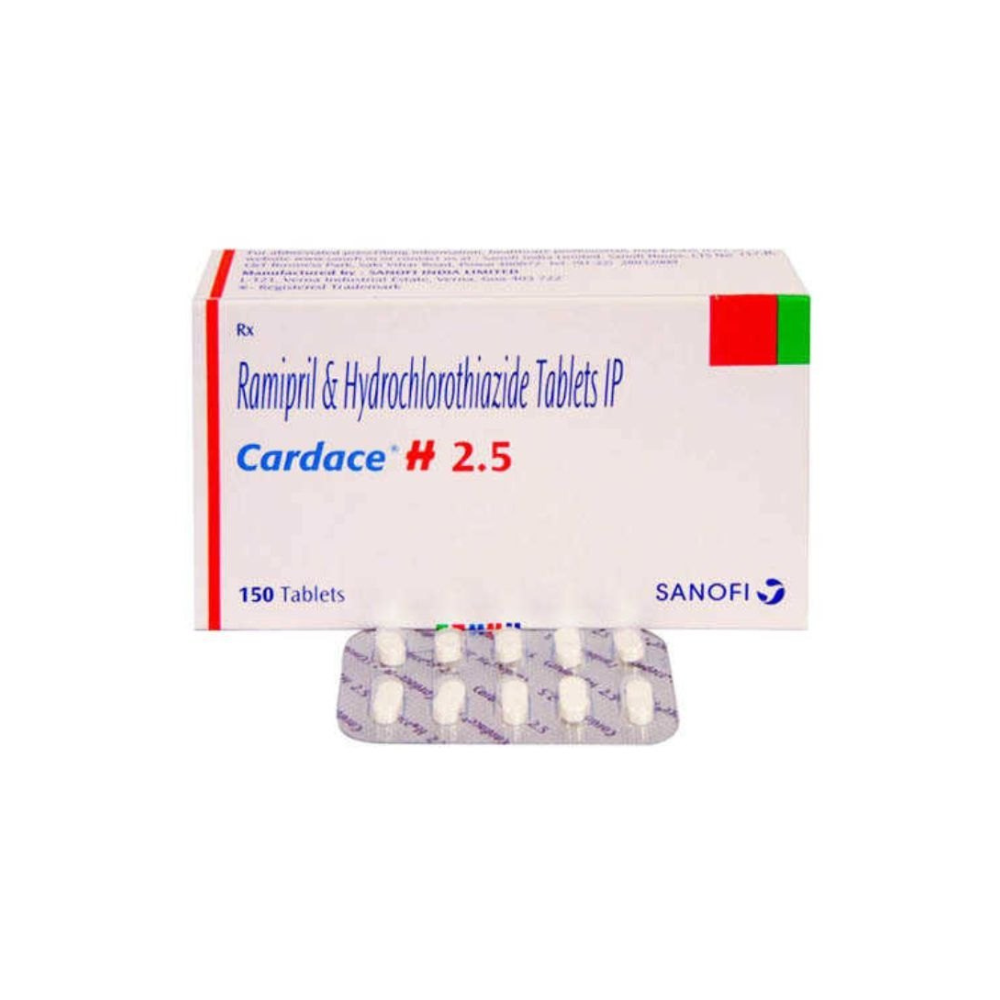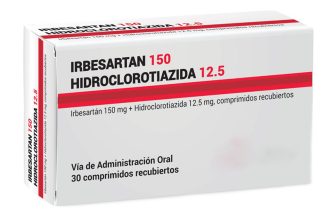Consider combining carvedilol and ramipril for patients with heart failure and hypertension. This strategy offers potential benefits beyond those achieved with either drug alone.
Specifically, carvedilol, a beta-blocker with alpha-blocking properties, reduces heart rate and blood pressure, improving cardiac output. Ramipril, an ACE inhibitor, lowers blood pressure and reduces afterload, further supporting heart function. Synergistic effects are observed in reducing mortality and morbidity in appropriate patients.
However, careful monitoring is key. Regularly assess blood pressure, heart rate, and renal function. Potential side effects, including hypotension, bradycardia, and hyperkalemia, require close attention. Adjust dosages meticulously based on individual patient response and tolerance. Always consult complete prescribing information for both medications.
Remember: This information is for educational purposes only and should not replace advice from a healthcare professional. Individualized treatment plans, tailored to specific patient needs and conditions, are paramount. Always consult with your doctor before starting or changing any medication regimen.
- Carvedilol and Ramipril Combination: A Detailed Overview
- Individual Drug Mechanisms of Action
- Combined Effects on Blood Pressure and Heart Rate
- Clinical Indications for Combined Therapy
- Synergistic Effects in HFrEF
- Post-Myocardial Infarction Management
- Patient Selection
- Dosage and Administration Guidelines
- Carvedilol Dosage
- Ramipril Dosage
- Important Considerations:
- Potential Drug Interactions
- Common Side Effects and Management
- Contraindications and Precautions
- Specific considerations for individual medications:
- Medication Interactions:
- Monitoring Parameters and Patient Follow-up
Carvedilol and Ramipril Combination: A Detailed Overview
This combination treats hypertension and heart failure effectively. Carvedilol, a beta-blocker, slows heart rate and reduces blood pressure. Ramipril, an ACE inhibitor, relaxes blood vessels, further lowering blood pressure and improving heart function.
Synergistic effects occur, meaning the combined impact surpasses the sum of individual drug effects. This enhanced action provides superior blood pressure control and reduces cardiovascular risk significantly. Studies consistently demonstrate a marked improvement in patient outcomes compared to monotherapy with either drug alone.
Dosage depends on individual health status and response. Physicians typically start with low doses, gradually increasing them as tolerated. Regular monitoring of blood pressure and heart rate is crucial for optimal management and to identify potential side effects.
Common side effects include dizziness, fatigue, and nausea. More serious, though rare, side effects might include angioedema (swelling of the face, lips, or tongue) and a persistent dry cough. Patients should report any unusual symptoms to their healthcare provider immediately.
Careful consideration is needed for patients with certain conditions, such as severe asthma, bradycardia (slow heart rate), or severe renal impairment. The combination may not be suitable for everyone, necessitating a thorough assessment by a medical professional before initiating treatment.
This combination offers a powerful approach to managing hypertension and heart failure. However, individual responses vary, and continuous medical supervision ensures safe and effective treatment.
Individual Drug Mechanisms of Action
Carvedilol, a non-selective beta-blocker, reduces blood pressure by blocking both beta-1 and beta-2 adrenergic receptors. Beta-1 blockade slows heart rate and reduces contractility, decreasing cardiac output. Beta-2 blockade opposes the vasodilatory effects of beta-2 stimulation, but this is generally outweighed by the alpha-1 blocking action. Importantly, carvedilol also exhibits alpha-1 adrenergic blocking properties, leading to vasodilation and further lowering of blood pressure.
Ramipril, an angiotensin-converting enzyme (ACE) inhibitor, works by blocking the conversion of angiotensin I to angiotensin II. Angiotensin II is a potent vasoconstrictor and also stimulates aldosterone release, increasing sodium and water retention. By inhibiting ACE, ramipril reduces vasoconstriction, decreases aldosterone levels, and promotes sodium and water excretion, ultimately leading to lower blood pressure and improved cardiac output.
The combined action of these two drugs offers a synergistic effect, addressing multiple aspects of hypertension and heart failure management. Carvedilol directly reduces the heart’s workload, while ramipril tackles the hormonal and vascular components, providing a multifaceted approach to blood pressure control. This combined approach often leads to superior outcomes compared to monotherapy.
Combined Effects on Blood Pressure and Heart Rate
Carvedilol and ramipril, used together, demonstrably reduce both systolic and diastolic blood pressure. Studies show a greater reduction than with either drug alone. The magnitude of this combined effect varies depending on the patient’s individual characteristics and baseline blood pressure.
Ramipril, an ACE inhibitor, primarily lowers blood pressure by reducing vascular resistance. Carvedilol, a beta-blocker and alpha-blocker, works through multiple mechanisms, including reducing heart rate and contractility, thus further decreasing blood pressure and also influencing cardiac output.
Regarding heart rate, expect a decrease. Carvedilol’s beta-blocking properties directly slow the heart rate. This effect is usually well-tolerated, but monitoring for bradycardia (slow heart rate) is necessary, particularly in patients with pre-existing conduction abnormalities.
Clinically relevant data: Meta-analyses consistently demonstrate significant reductions in both systolic and diastolic blood pressure with the combination therapy. These findings support its use in managing hypertension, particularly in patients with associated cardiovascular conditions.
Note: Individual responses to this combination therapy vary. Close monitoring of blood pressure and heart rate is crucial. Adjusting dosages may be needed based on the patient’s response.
Clinical Indications for Combined Therapy
Carvedilol and ramipril are frequently combined for patients with heart failure, particularly those with reduced ejection fraction (HFrEF). This combination targets multiple aspects of the disease. Ramipril, an ACE inhibitor, reduces afterload and improves cardiac remodeling. Carvedilol, a beta-blocker, slows the heart rate, reduces myocardial oxygen demand, and improves contractility.
Synergistic Effects in HFrEF
Studies demonstrate improved survival and reduced hospitalization rates when using carvedilol and ramipril concurrently in patients with HFrEF compared to monotherapy. This synergistic effect stems from their complementary mechanisms of action. The combination often leads to better control of symptoms, such as shortness of breath and fatigue.
Post-Myocardial Infarction Management
Post-myocardial infarction (MI), this combination plays a significant role in reducing mortality and morbidity. Carvedilol’s cardioprotective effects, along with ramipril’s renin-angiotensin-aldosterone system (RAAS) inhibition, contribute to improved left ventricular function and reduced risk of recurrent events. This approach is especially relevant for patients with left ventricular dysfunction following an MI.
Patient Selection
Careful patient selection is crucial. The combination is contraindicated in patients with certain conditions, including severe bradycardia, second- or third-degree heart block, or significant hypotension. Close monitoring of blood pressure and heart rate is essential during initiation and titration of these medications. Regular monitoring of renal function is also necessary due to ramipril’s potential effect on kidney function. Individualized treatment plans, tailored to specific patient characteristics and risk profiles, are key to optimizing outcomes.
Dosage and Administration Guidelines
Carvedilol and ramipril are typically prescribed as separate medications, not as a fixed-dose combination. Therefore, dosage depends on individual patient needs and is determined by the prescribing physician. Always follow your doctor’s instructions carefully.
Carvedilol Dosage
- Initial dose is usually low and gradually increased. Common starting doses range from 3.125 mg to 6.25 mg twice daily.
- The dose is adjusted based on individual response and tolerance, aiming for the lowest effective dose. Maximum daily dose may vary depending on the indication (e.g., heart failure, hypertension).
- Titration should be gradual to minimize side effects. Consult your doctor for a specific titration schedule.
Ramipril Dosage
- Ramipril also begins with a low dose, usually 1.25 mg once daily, gradually increased.
- The dose is tailored to the patient’s blood pressure response and tolerability. Higher doses may be used, but careful monitoring is necessary.
- Similar to carvedilol, a gradual increase is recommended to minimize side effects.
Always inform your doctor of any existing health conditions, including kidney or liver problems, before starting either medication. Regular monitoring of blood pressure and kidney function is typically advised, especially during the initial dosage adjustment period.
Important Considerations:
- Never adjust your dosage without consulting your doctor. Sudden changes can be harmful.
- Report any side effects to your physician immediately. Common side effects include dizziness, fatigue, and cough.
- This information is for educational purposes only and does not replace professional medical advice. Always seek the guidance of your doctor or pharmacist for any questions concerning your medications.
Potential Drug Interactions
Combining carvedilol and ramipril requires careful monitoring for potential drug interactions. Always inform your doctor of all medications you are taking, including over-the-counter drugs and supplements.
Here are some key interactions to be aware of:
- Increased risk of bradycardia (slow heart rate): Both carvedilol and ramipril can lower heart rate. This effect is additive, meaning the combined effect is greater than the sum of each drug’s individual effect. Regular heart rate monitoring is recommended, especially initially.
- Increased risk of hypotension (low blood pressure): Similarly, both drugs can lower blood pressure. This combined effect can cause dizziness, lightheadedness, or fainting, particularly when standing up quickly. Adjusting dosages slowly and monitoring blood pressure regularly is crucial.
- Interactions with other medications: Carvedilol and ramipril can interact with several other drugs, including:
- Digoxin: The combination may increase digoxin levels, potentially leading to toxicity.
- Diuretics: Concurrent use of diuretics can increase the risk of hypotension.
- NSAIDs (non-steroidal anti-inflammatory drugs): NSAIDs may reduce the antihypertensive effects of both carvedilol and ramipril.
- Potassium-sparing diuretics: Combining these can lead to hyperkalemia (high potassium levels).
- Monitoring for side effects: Close monitoring for side effects such as dizziness, fatigue, nausea, and shortness of breath is recommended. Report any new or worsening symptoms to your doctor immediately.
Remember, this information is not a substitute for professional medical advice. Always consult your doctor or pharmacist before starting, stopping, or changing any medication, especially when combining multiple drugs.
Common Side Effects and Management
Carvedilol and ramipril, while effective in managing hypertension and heart failure, can cause side effects. Expect dizziness, fatigue, and nausea as common occurrences. Drink plenty of fluids and avoid sudden positional changes to minimize dizziness. For persistent nausea, your doctor might suggest antiemetics.
Bradycardia (slow heart rate) is a potential side effect of carvedilol. Report slow heart rate and associated symptoms like lightheadedness immediately. Your dosage might need adjustment or a different medication considered.
Ramipril can cause a dry cough, often persistent. Discuss this with your physician. They may switch you to another ACE inhibitor or prescribe medication to suppress the cough.
Hyperkalemia (high potassium levels) is a possibility, especially with kidney problems. Regular potassium level checks are advisable. Your doctor may adjust your medication or diet accordingly to maintain safe levels.
Both medications can lower blood pressure significantly. Monitor your blood pressure regularly and report any significant drops. Your doctor can adjust your dosage or add other medications to manage your blood pressure safely and effectively.
Always inform your doctor about all medications, including over-the-counter drugs and supplements, to avoid harmful interactions. Report any new or worsening symptoms promptly for appropriate management.
Contraindications and Precautions
Avoid Carvedilol and ramipril combination if you have a history of severe bradycardia (slow heart rate) or second- or third-degree atrioventricular block. This combination can further slow your heart rate, potentially causing dangerous complications.
Patients with symptomatic hypotension (low blood pressure) should exercise caution. Closely monitor blood pressure, particularly in the initial stages of treatment. Dosage adjustments may be necessary.
Caution is advised for patients with severe renal impairment. Kidney function should be closely monitored, and dosage adjustments are often required due to the drugs’ excretion route.
Use with extreme caution in patients with bronchial asthma or chronic obstructive pulmonary disease (COPD). Both carvedilol and ramipril can cause bronchospasm, although this is less common with carvedilol. Have a plan for managing bronchospasm if it develops. Consider alternative medications if possible.
Specific considerations for individual medications:
Carvedilol may worsen heart failure in certain circumstances. Close monitoring for signs of worsening heart failure, such as increased shortness of breath or edema, is crucial.
Ramipril may cause angioedema (swelling of the face, lips, tongue, or throat). This is a serious, albeit rare, side effect requiring immediate medical attention.
Medication Interactions:
| Medication Class | Potential Interaction | Recommendation |
|---|---|---|
| Beta-blockers | Additive bradycardia | Monitor heart rate; dosage adjustments may be necessary. |
| ACE inhibitors (other than ramipril) | Increased risk of hypotension or renal impairment | Closely monitor blood pressure and renal function. |
| Diuretics | Increased risk of hypotension | Monitor blood pressure; dosage adjustments may be required. |
Always inform your doctor of all medications you are taking, including over-the-counter drugs and supplements. This helps ensure the safest and most effective treatment.
Monitoring Parameters and Patient Follow-up
Regularly monitor blood pressure, heart rate, and weight. Aim for blood pressure readings below 140/90 mmHg, ideally closer to 120/80 mmHg. Heart rate should be observed for bradycardia; adjust medication as needed. Weight gain may indicate fluid retention – consider adjusting diuretics if prescribed.
Assess for potential side effects. These include dizziness, fatigue, nausea, and lower extremity edema. Document these symptoms meticulously and take appropriate action. Closely watch for signs of worsening heart failure, such as increased shortness of breath or edema.
Laboratory tests are vital. Schedule regular blood tests to monitor serum potassium levels, creatinine, and liver function tests (LFTs). Changes in these parameters warrant careful evaluation and potential dose adjustments. Electrolyte imbalances require prompt attention.
| Parameter | Frequency | Action |
|---|---|---|
| Blood pressure | Weekly initially, then monthly | Adjust medication as needed to achieve target blood pressure |
| Heart rate | Each visit | Assess for bradycardia; adjust medication or consider alternative therapies |
| Weight | Each visit | Monitor for fluid retention; adjust diuretics as needed |
| Serum potassium | Monthly initially, then every 3 months | Address hypokalemia promptly with potassium supplements or medication adjustments |
| Creatinine | Monthly initially, then every 3 months | Monitor renal function; adjust medication dosage if renal impairment develops |
| LFTs | Baseline, then every 3 months | Detect liver dysfunction; adjust medication or consider alternative therapies |
Patient education is crucial. Instruct patients on recognizing and reporting side effects. Encourage lifestyle modifications, including dietary changes (low sodium diet) and regular exercise, where appropriate. Schedule follow-up appointments to review progress and adjust medication as needed. These regular check-ups allow for proactive management and improved patient outcomes.






